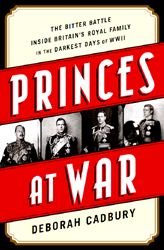Ethnic differences seldom caused conflict in the Middle Colonies because they seldom limited opportunity. The promise of prosperity (promotional pamphlets proclaimed Pennsylvania “the best poor man’s country in the world”) had attracted all in the first place, and achieving prosperity was relatively easy, even for those who came with only a willingness to work. From its founding, Pennsylvania granted upward of 500 acres of land to families on arrival, provided they would pay the proprietor an annual quitrent. Similar arrangements existed in New Jersey and Delaware. Soon travelers in the Middle Colonies were being struck by “a pleasing uniformity of decent competence.” Immigrants found it easier—and less risky—to abandon overcrowded Europe to till virgin fields in Pennsylvania and Delaware.
New York was something of an exception to this favorable economic situation. When the English took over New York, they extended the Dutch patroon system by creating thirty manorial estates covering about 2 million acres. But ordinary New Yorkers never lacked ways of becoming landowners. A hundred acres along the Hudson River could be bought in 1730 for what an unskilled laborer could earn in three months. Even tenants on the manorial estates could obtain longterm leases that had most of the advantages of ownership but did not require the investment of any capital. “One may think oneself to be a great lord,” one frustrated “lord” of a New York manor wrote a colleague, “but it does not amount to much, as you well know.”
Mixed farming offered the most commonly trod path to prosperity in the Middle Colonies, but not the only one. Inland communities offered comfortable livelihoods for artisans. Farmers always needed barrels, candles, rope, horseshoes, nails, and dozens of other articles in everyday use. Countless opportunities awaited the ambitious settler in the shops, yards, and offices of New York and Philadelphia. Unlike Boston, New York and Philadelphia profited from navigable rivers that penetrated deep into the back country. Although founded half a century after New York and Boston, Philadelphia grew more rapidly than either. In the 1750s, when its population reached 15,000, it passed Boston to become the largest city in English America.
Most Philadelphians who stuck to their business, particularly if it happened to be maritime commerce, did well for themselves. John Bringhurst, a merchant, began his career as a clerk. At his death in 1751 he left an estate of several thousand pounds. The city’s “leather-apron” artisans often accumulated estates of more than ?400, a substantial sum at the time. By way of contrast, in Boston after 1710, economic stagnation made it much more difficult for a skilled artisan to rise in the world.




 World History
World History









